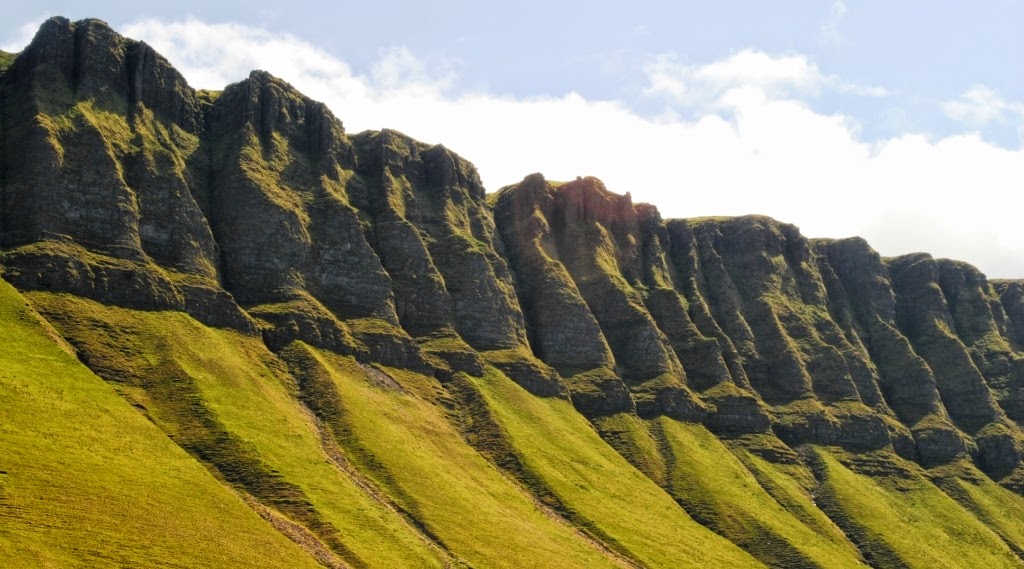Loughareema is a distinctive lake
in Northern Ireland located on the coast road, just a few miles from the
seaside town of Ballycastle, the lake is vanishes from time to time. The water
does disappear and reappear within hours. For this reason, the lake is known as
the Vanishing Lake. The lake sits on a leaky chalk-bed with a sinkhole that
often gets blocked up when peat washes into it. During the rainy season, water
from surrounding land fills up the Loughareema depression. As a result, the
depression turns out to be a lake. Though, the lake vanishes once the blockage
is cleared. The lake drains quickly underground and a passerby who is not aware
of the lake and its disappearing act would never even know it existed in the
first place. The Loughareema Lake can vanish within just few hours of time.
This phenomenon has made the Vanishing Lake one of the unique lakes in the
world.
Interestingly, the road to
Ballycastle runs right through the lake, though the modern road sits high
enough to avoid flooding. It may be possible that the road engineers who
constructed the road were misled by the lake’s trickery. In earlier days the
route was often under water, occasionally for weeks on end, making crossing precarious.
It was during one particularly bad state of flooding in 1898, a certain Colonel
John Magee McNeille, apprehensive to catch the 3 pm train from the town, convinced
his coachman to drive a covered wagon pulled by two horses through the lake.
When they reached the middle of
the lake, the cold water reached the bellies of the horse that became nervous.
The coachman used the whip; the horse went rearing up on its back legs and
turned to the side. The Colonel, his coachmen and the two horses soon succumbed
to the perfidious, cold waters. Since then fateful day several people have
reported seeing a phantom carriage pulled by two horses and ridden by a
military man on the lonely shores of Loughareema. The road has been raised
about the maximum flood level and just in case, a stone wall has been created
on each side of the road as it approaches the Lough so that no-one can ever
meets the same watery end as Colonel McNeille did on the afternoon of 30
September 1898.






















































